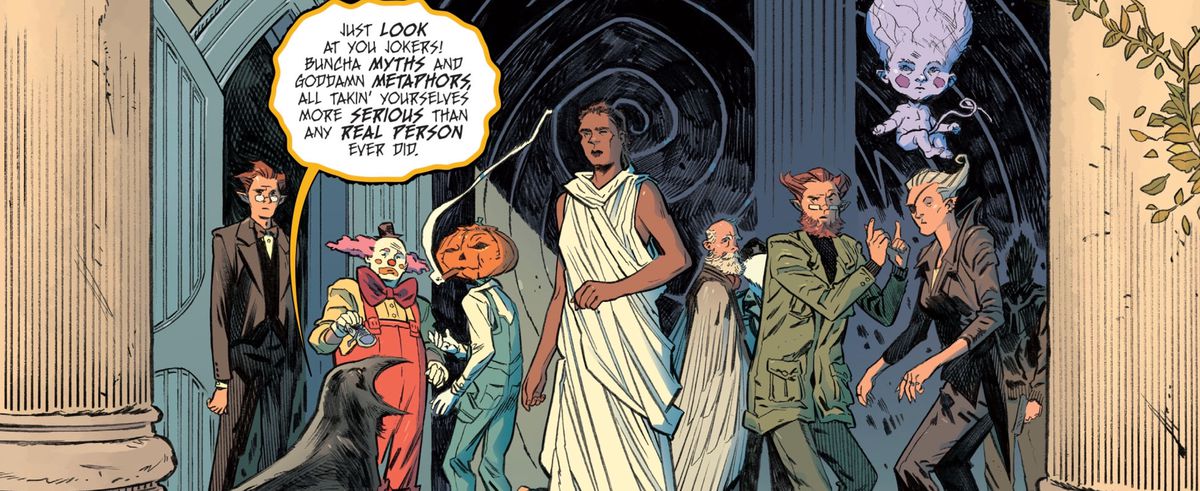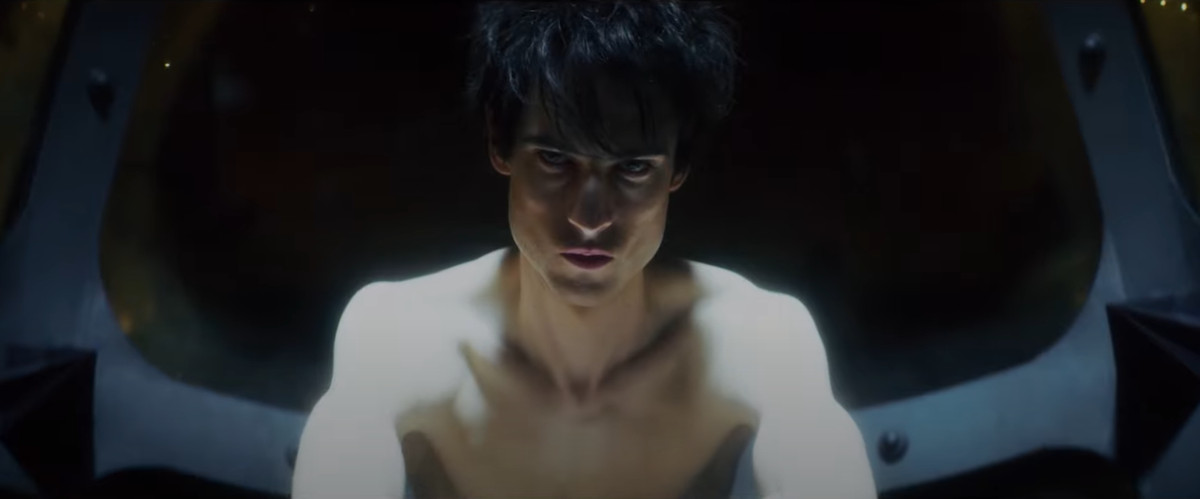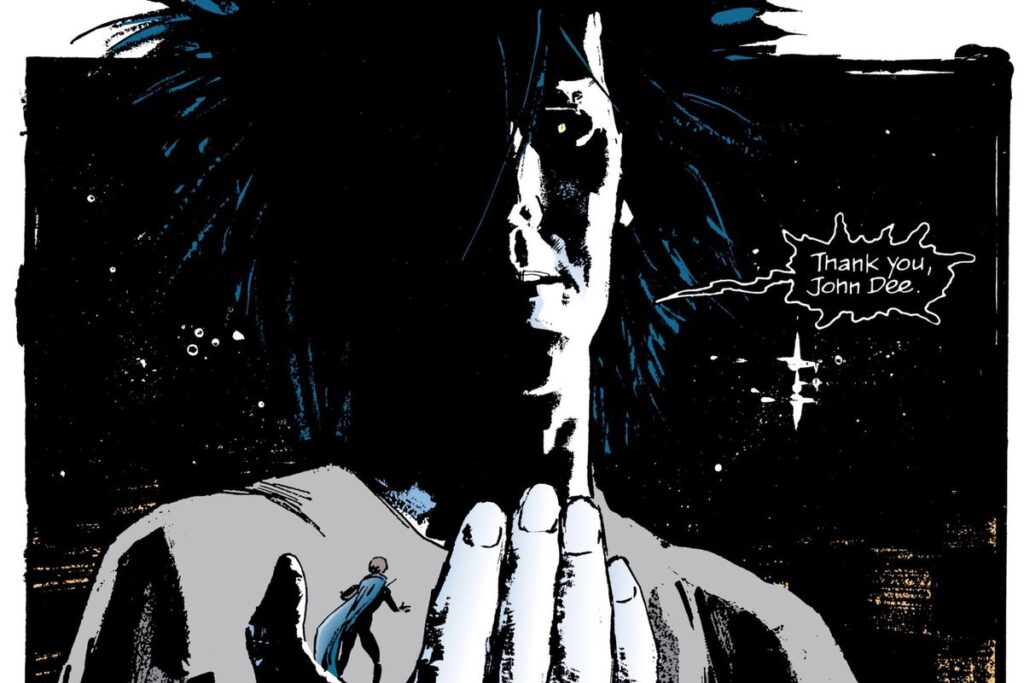If you’ve ever thought, Would Patton Oswalt be a good voice for a talking raven? Netflix’s The Sandman is here to answer your question. Whether it answers in the affirmative or the negative is, ultimately, in the eye of the beholder. But Sandman creator Neil Gaiman has said in a blog post that Oswalt was the first person they cast for the comic book adaptation, and he was very intentional with his pick.
“The question was, could we find an actor who could make you care about a dead person who was now a bird in the Dreaming – one who isn’t certain what’s going on, or whether any of this is a good idea? And could we find a voice performer who was also the kind of Sandman fan who used to stand in line to get his Sandman comics signed?” Gaiman wrote. “The answer was, we could if we asked Patton Oswalt (he/him). And Patton was the first person we asked, and the first person we cast, the day before we pitched The Sandman to Netflix.”
If this seems like he’s overthinking it, just know (if you don’t already): This development is a helluva long time coming. In a similar way to how Dream of the Endless is tasked with spending years trying to rebuild his realm, Gaiman has found himself some 30 years into a journey to translate The Sandman comics to the screen. Over those decades, that screen has been big and silver and small and serialized, but it’s always been just a bit elusive.
As we know now, Netflix would finally win out, providing the story a properly serialized home along with a hefty budget and a cast just as endless as its hero. And now, along with the chapters of the original comic, we can now look back at the chapters of Sandman’s attempted development, and the alternate realities we might’ve seen had Sandman been optioned sooner.
The 1990s: Working toward a Sandman movie
Image: Neil Gaiman, Mike Dringenberg, Malcolm Jones III/DC Comics
As Gaiman recalls it, the first meeting he ever took about a Sandman movie happened in 1990. He went into a meeting at Warner Bros. where executives asked him what he wanted to see from a Sandman movie. “‘Please don’t do it,’” Gaiman remembered of the meeting at a press roundtable in 2020. “I remember the Warner’s exec, Lisa Henson, looking at me very puzzled and saying, ‘Nobody’s ever come into my office and asked me not to make a movie before.’ And I said, ‘Well, I am. Please don’t. I’m working on the comic, and a movie would just be a distraction and a confusion. Just let me do my thing.’ And bless everybody, they kind of let me get on with it.”
While it held off for some time, Warner Bros. made motions to adapt the story through the decade: In the mid-1990s Roger Avary (who co-wrote Pulp Fiction with Quentin Tarantino, and directed Silent Hill and Beowulf) was tapped to direct. The script came from Ted Elliott and Terry Rossio (a duo behind Aladdin, Pirates of the Caribbean: The Curse of the Black Pearl, and Shrek, among other gems); the story merged “The Doll’s House” and “Preludes and Nocturnes” storylines, and was going to be partially animated. Avary was eventually fired, but went on to collaborate with Gaiman on Beowulf.
A few years, scripts, and creative crew changes later, Sandman adaptations continued to languish around Hollywood. At least one script was described by Gaiman as “not only the worst Sandman script I’ve ever seen, but quite easily the worst script I’ve ever read.” (While some sources from the time attribute this quote to Gaiman talking about the Elliott/Rossio script, others seem to think this was a later version of Warner Bros. plans.)
The 2000s: What is the Sandman?

Image: Si Spurrier, Bilquis Evely/DC Comics
After ending the millennium on a dour note for Sandman, Gaiman spoke at 2007’s Comic-Con about how he wasn’t compromising his vision just for the opportunity to see Sandman on the big screen. During a Q&A, Mania Entertainment quoted Gaiman as saying:
I’d rather see no ‘Sandman’ movie made than a bad ‘Sandman’ movie. But I feel like the time for a ‘Sandman’ movie is coming soon. We need someone who has the same obsession with the source material as Peter Jackson had with ‘Lord of the Rings’ or Sam Raimi had with ‘Spider-Man’.
To remind you just how much has changed between then and now, I’ll also note that Gaiman went on to talk about how Zack Snyder was “doing Watchmen at the moment, and he knows what he’s doing and I hope it’s good.” That same year, Gaiman would also be quoted as saying that Terry Gilliam would be his ideal choice for adapting the comic, but that (at the time) Gaiman was busy trying to get $70 million so he could adapt Good Omens.
When one fan at Comic-Con said that, given the opportunity, he’d make the movie himself, Gaiman responded: “That’s what I mean. I’m growing vats of people like you all around the world. Eventually we’ll put a bunch of you in a room with knives, and whoever emerges alive will be the winner and can make the Sandman movie.”
The 2010s: From Kripke and Mangold to Goyer and Netflix

Image: Netflix
But even when Neil Gaiman gave up, Warner Bros. and its deep pockets never did. Supernatural showrunner Eric Kripke was attached to a Warner Bros. Television version in 2010 that never came to fruition (and Gaiman wasn’t happy with it). Logan director James Mangold pitched a concept to HBO, but nothing came of it.
Although the adaptation had been a snowball in development hell for a good decade by this point, Sandman continued to get shouted out by executives — or at least one executive, in a 2013 Hollywood Reporter interview. When asked what DC titles she wanted to see on screen, then-DC Entertainment president Diane Nelson said, “Sandman is right on top. I think it could be as rich as the Harry Potter universe.”
And thus she spoke it into (almost) creation: In December 2013, there was motion, and true to his word, Gaiman enlisted devoted fans of his comic. Gaiman announced he would be working with David S. Goyer (the Blade and Dark Knight trilogies, Batman v Superman: Dawn of Justice) and Joseph Gordon-Levitt (3rd Rock From the Sun, Looper) to bring the comic to life as a movie. They hired Jack Thorne (who created Shameless, Skins, and Harry Potter and the Cursed Child) to write the screenplay.
This version got relatively far: Once again, there was a script going around. Gaiman was in the room when they worked on the script. Goyer told Deadline in December 2014 that it was “a draft Warners is very happy with and we’re moving forward, knock on wood.” Moving forward with Gordon-Levitt as a producer, star, and director of the project, Goyer anticipated the script going out to actors in 2015.
Around this time, ownership of Vertigo was shifted from Warner Bros. to New Line (a subsidiary, not a separate entity). Ultimately, that C-suite change would lead to JGL departing the project. “A few months ago, I came to realize that the folks at New Line and I just don’t see eye to eye on what makes Sandman special, and what a film adaptation could/should be,” Gordon-Levitt wrote on his Facebook page in March 2016. “So unfortunately, I decided to remove myself from the project. I wish nothing but the best for the team moving forward.”
Reminder for the curious: I don’t own SANDMAN. @DCComics does. I don’t choose who writes scripts, the director, producer or cast.
— Neil Gaiman (@neilhimself) March 6, 2016
Ultimately, Goyer and Gaiman stuck with the project. In the years that followed, they also lost screenwriter Eric Heisserer (Arrival, Shadow and Bone), who told iO9 that he quit the film project because he felt the property belonged on TV:
I had many conversations with Neil [Gaiman] on this, and I did a lot of work on the feature and came to the conclusion that the best version of this property exists as an HBO series or limited series, not as a feature film, not even as a trilogy. The structure of the feature film really doesn’t mesh with this. So I went back and said here’s the work that I’ve done. This isn’t where it should be. It needs to go to TV. So I talked myself out of a job!
And thus the show eventually wound its way around to Netflix. Although Sandman as a TV show was shopped around to multiple TV outlets — including HBO — Netflix was the one who made the big play, having recently lost its deal with Marvel. The streaming company signed what Hollywood Reporter described as a “massive” deal to scoop up Sandman, with sources at the time saying it was the most expensive TV series DC Entertainment had ever done.
Thirty years into this process, Gaiman is publicly optimistic about the project. He’s said he’ll be more involved with The Sandman than he was with the Starz adaptation of American Gods, but less so than Amazon Prime Video’s Good Omens series (which he adapted all of). He, Goyer, and Allan Heinberg will serve as executive producers.
While this’ll obviously be the first Sandman TV (or film) adaptation to see the light of day, Gaiman seems hopeful about it having the legs to go even further than just a season. As MovieWeb quotes Gaiman saying in a press roundtable:
People would write The Sandman movie scripts and they go, ‘But it’s an R-rated movie, and we can’t have $100 million R-rated movie.’ So, that wouldn’t happen. You needed to get to a world in which long form storytelling is an advantage rather than a disadvantage. And the fact that we have certainly five issues of Sandman plus, essentially, 13 full books worth of material, is a really good thing. It’s not a drawback. It’s on our side. And the fact that we’re in a world in which we can take things that only existed in comic book art, and that can now exist in reality.

